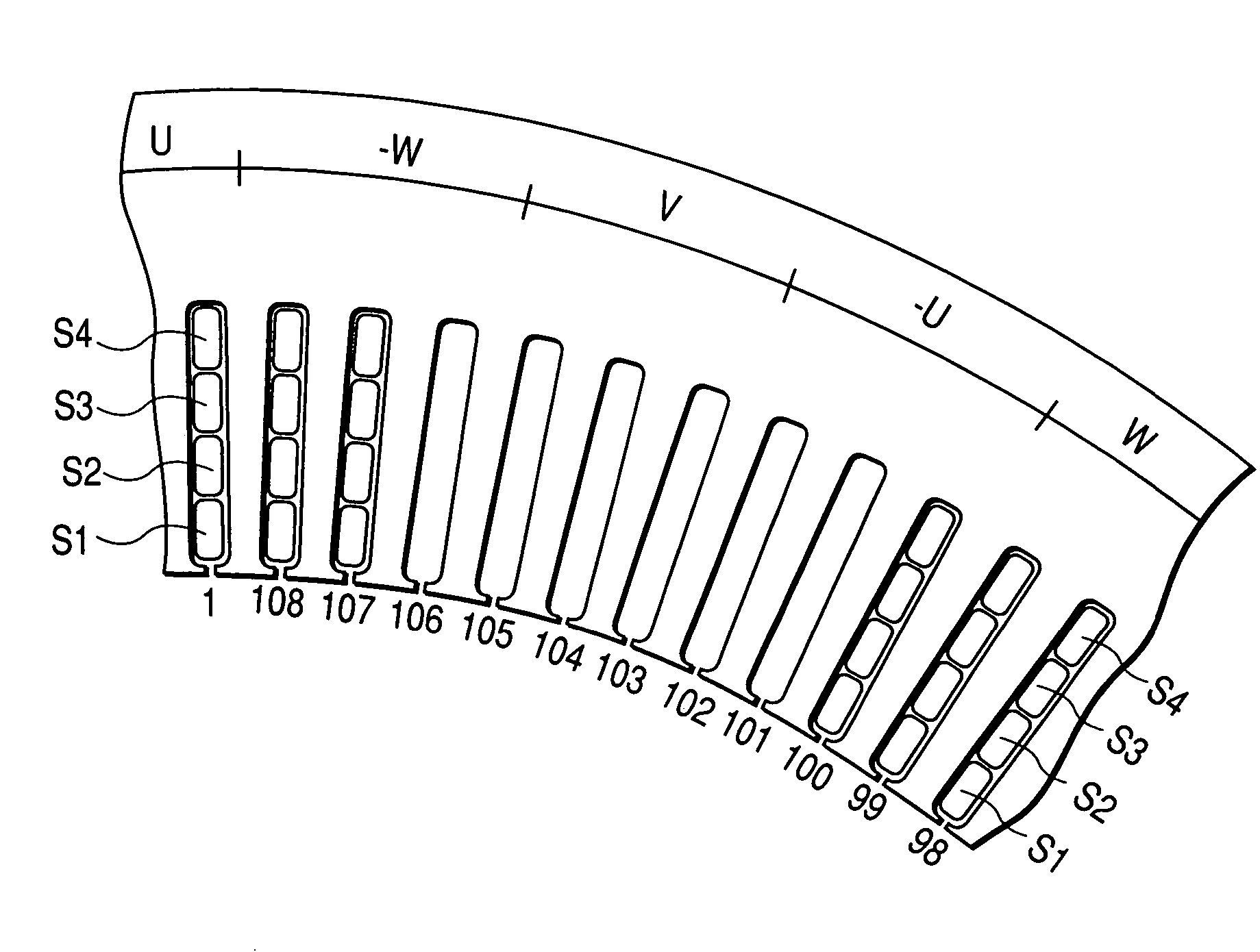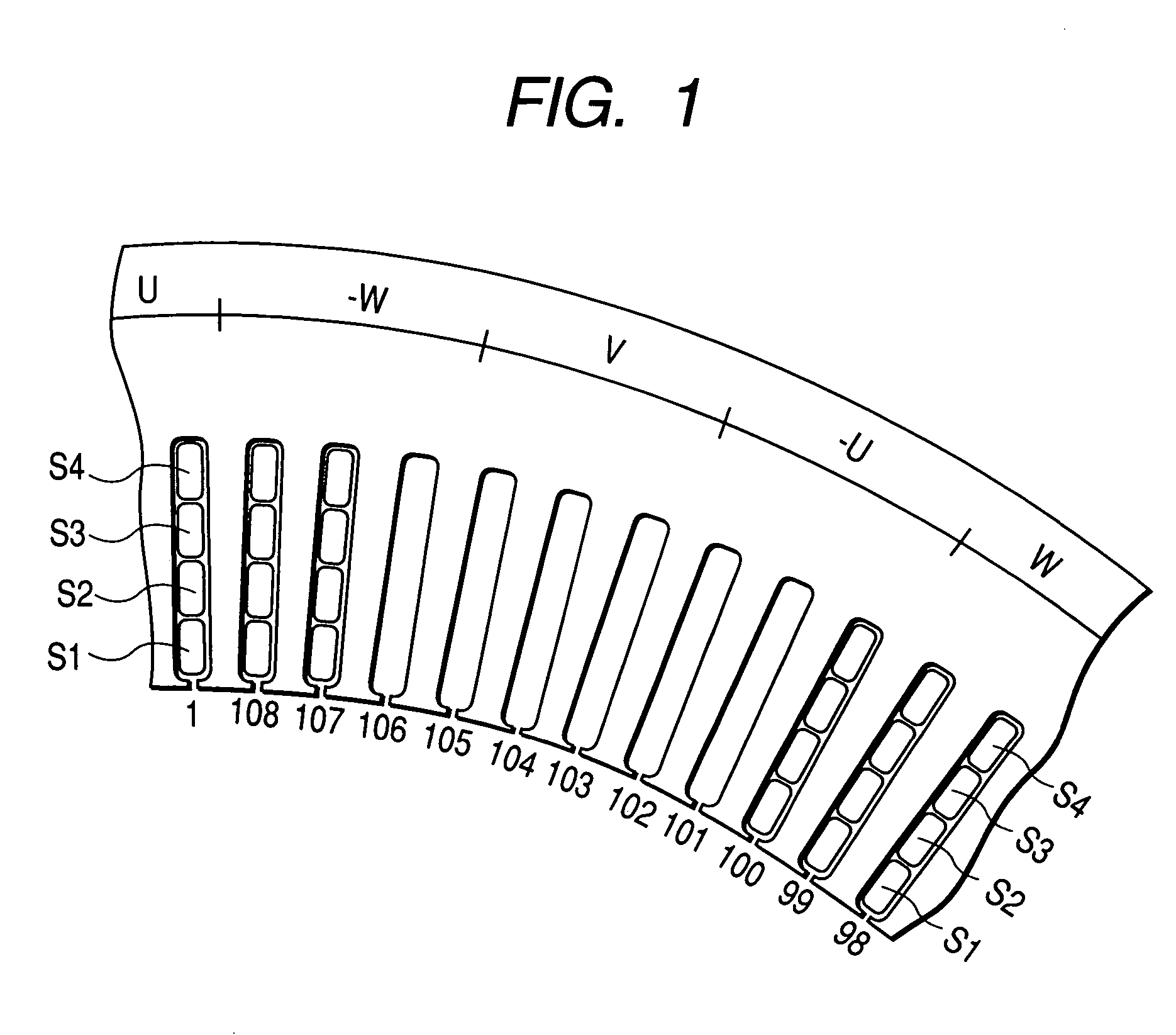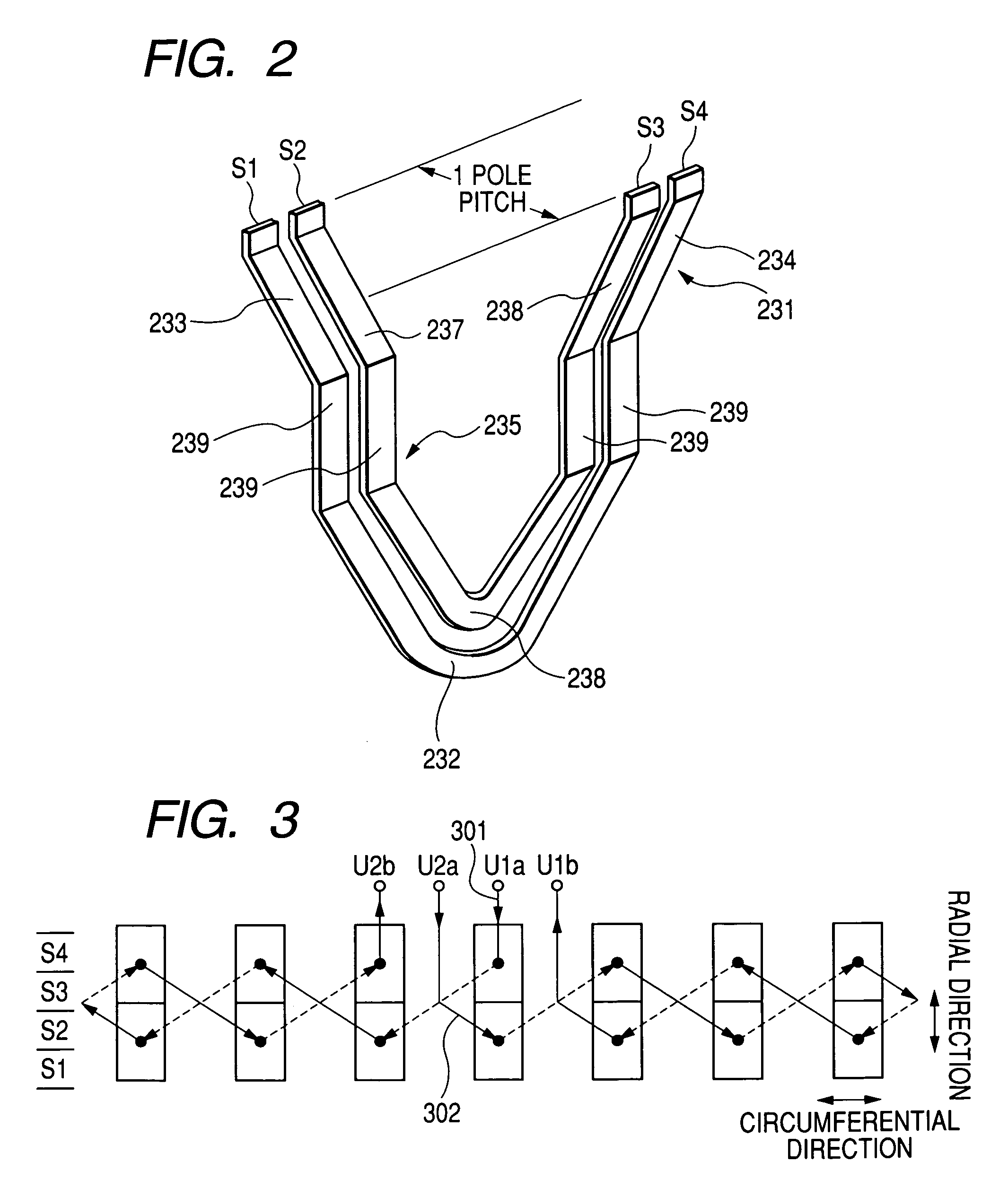4-layer type of stator winding formed of sequentially connected segments located in respective slot pairs, and method of manufacture thereof
a stator winding and sequential connection technology, which is applied in the direction of windings, dynamo-electric components, and prefabricated windings. it can solve the problems of complex operation, difficult manufacturing, and substantial manufacturing difficulties of the stator winding, so as to achieve the effect of sequential manufacturing operations and convenient connection
- Summary
- Abstract
- Description
- Claims
- Application Information
AI Technical Summary
Benefits of technology
Problems solved by technology
Method used
Image
Examples
first embodiment
[0062]FIG. 1 is a partial view of a stator of a 3-phase 12-pole rotary electric machine, having a first embodiment of a stator winding formed thereon. As indicated, the stator core has a total of 108 slots, so that there are 9 slots per pole, so that the pole pitch is nine times the slot pitch and there are three slots per pole. In that way, there are 36 sets of 3 mutually adjacent identical-phase slots, such as the slots 106 to 108. Such a set will be referred to in the following as an identical-phase 3-slot set.
[0063]In each slot, there are four layers S1, S2, S4, S3 at successive radial positions (referred to as the first, second, third and fourth conductor layers in the following) as shown, with conductor each layer consisting of a single intra-slot portion of a segment, and layer S4 being the outermost layer.
[0064]Each of the segment intra-slot portions is covered with a thin layer of electrical insulation material.
[0065]This embodiment utilizes two forms of segment, whose conf...
second embodiment
[0090]A second embodiment will be described in the following, referring to the conceptual partial wiring diagram of FIG. 6. The first embodiment was described assuming that each identical-phase slot set consists of 3 adjacent slots, so that the pole pitch is nine times the slot pitch. With the second embodiment, each identical-phase slot set consists of two adjacent slots, so that the pole pitch is 6 times the slot pitch, and hence each parallel pair of a large segment and small segment extends between two slots that are spaced apart by 6 times the slot pitch.
[0091]As described for the first embodiment, the layers S1, S2 of a slot contain respective conductors of one partial coil, while the layers S3, S4 of the slot contain respective conductors of a second partial coil, with these partial coils being of the same phase. Hence, with the second embodiment, the two slots of each identical-phase slot set contain conductors of a total of four partial coils which are of the same phase. Fo...
third embodiment
[0099]A third embodiment of a 4-layer sequential segment connection stator winding for a 3-phase rotary electric machine will be described referring to the conceptual partial wiring diagram of FIG. 7. With this embodiment, each identical-phase slot set consists of a single slot, i.e., the pole pitch is three times the slot pitch, so that each parallel pair of large and small segments 231, 235 extends between two slots that are spaced apart by three times the slot pitch. In addition, this embodiment differs from the previous embodiments in that there are 8 layer positions within each slot, with the successively radially extending layers designated as S1 to S8 respectively as shown in FIG. 7.
[0100]The conductors of the four layers S1 to S4 are connected to constitute a first pair of partial coils (referred to in the following as the radially inward-side partial coils) in the same way as described for the first embodiment, while the conductors of the four layers S5 to S8 are similarly ...
PUM
| Property | Measurement | Unit |
|---|---|---|
| distance | aaaaa | aaaaa |
| sizes | aaaaa | aaaaa |
| size | aaaaa | aaaaa |
Abstract
Description
Claims
Application Information
 Login to View More
Login to View More - R&D
- Intellectual Property
- Life Sciences
- Materials
- Tech Scout
- Unparalleled Data Quality
- Higher Quality Content
- 60% Fewer Hallucinations
Browse by: Latest US Patents, China's latest patents, Technical Efficacy Thesaurus, Application Domain, Technology Topic, Popular Technical Reports.
© 2025 PatSnap. All rights reserved.Legal|Privacy policy|Modern Slavery Act Transparency Statement|Sitemap|About US| Contact US: help@patsnap.com



